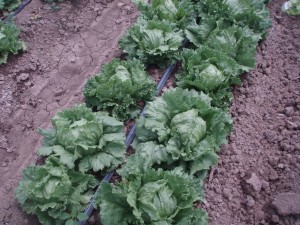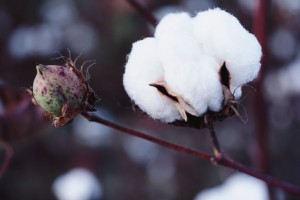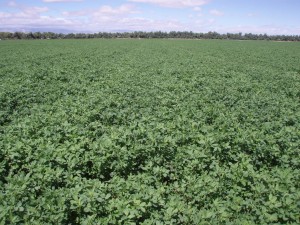Naumann Ranch, Oxnard, CA – Drip Irrigation on Mixed Vegetables
Mike and Brian Naumann are young farmers with a daunting legacy to fulfill: the family has been growing vegetables in Ventura County since 1898. But the Naumann brothers are not ones to buckle under pressure, and have adopted a “can-do” attitude to successfully farm 800 acres of mixed vegetables in a volatile, ever changing market. The secret to their success?
Continue reading
 Five-bale cotton yields would impress anybody. So when West Texas Cotton Farmer, William Carlton, averaged 2,575 pounds-per acre (five bales) on his 40-acre field with
Five-bale cotton yields would impress anybody. So when West Texas Cotton Farmer, William Carlton, averaged 2,575 pounds-per acre (five bales) on his 40-acre field with  When Bob Thomas and his son Rob began farming in the Imperial Valley six years ago, they quickly recognized that there must be a better way to irrigate their alfalfa. They soon discovered that cutting-edge growers were successfully using drip irrigation instead of sprinklers or gravity irrigation. After diligent research, they installed their first 116 acres with Toro’s Aqua-Traxx® drip tape in September of 2009, and have experienced significant benefits since then.
When Bob Thomas and his son Rob began farming in the Imperial Valley six years ago, they quickly recognized that there must be a better way to irrigate their alfalfa. They soon discovered that cutting-edge growers were successfully using drip irrigation instead of sprinklers or gravity irrigation. After diligent research, they installed their first 116 acres with Toro’s Aqua-Traxx® drip tape in September of 2009, and have experienced significant benefits since then. The benefits of drip irrigation are easy to see at Weilmunster Farms in Parma, Idaho. After adopting drip technology, the farm increased its hops yields by 400 pounds per acre, which translated into increased revenues of $800 to $1,600 per acre.
The benefits of drip irrigation are easy to see at Weilmunster Farms in Parma, Idaho. After adopting drip technology, the farm increased its hops yields by 400 pounds per acre, which translated into increased revenues of $800 to $1,600 per acre.